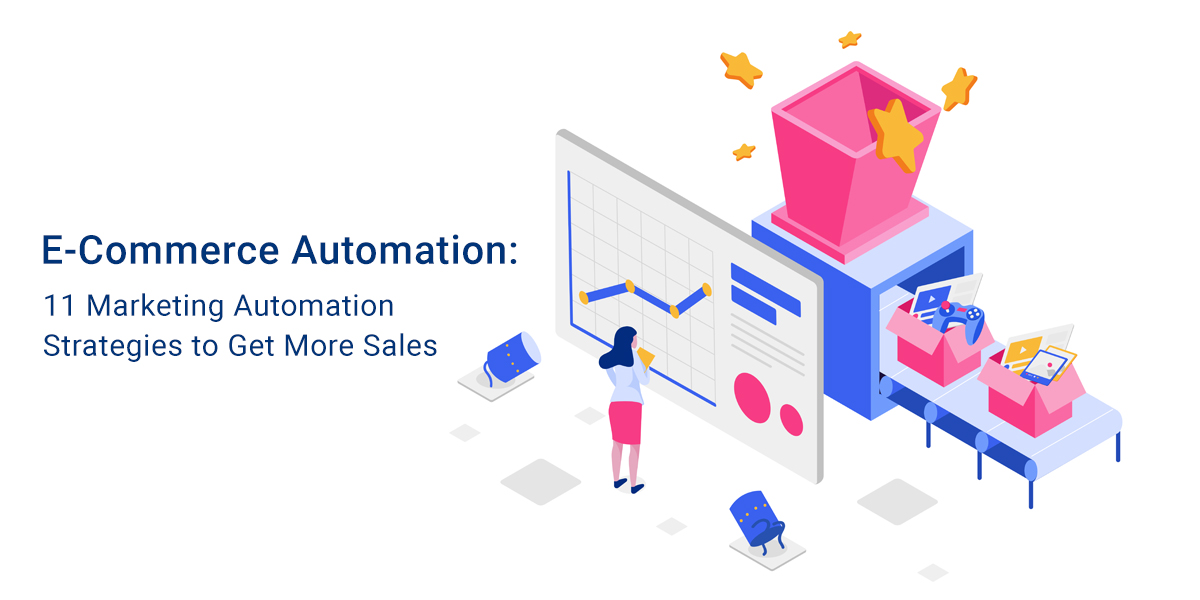The basic idea behind eCommerce automation is quite simple.
It automates, streamlines, and tracks different marketing tasks with the use of the software.
Yes, the human element still has a role to play, but a high proportion of eCommerce tasks can automate.
But good software or automation tool shouldn’t only be a way to make things easier for the marketing team.
It should also help you close more deals and win more deals to keep your business growing.
Marketing automation is one of the most exciting prospects in the industry today.
One can gain from getting an eCommerce marketing automation tool.
Yet, the intricacies of the tools are hard for some people if they don’t know how to use it.
The ideal approach is to integrate many tools into your marketing plan.
Implementing proven eCommerce marketing strategies need a shift in the mindset.
The tools allow you to tap into various benefits. This allows you to get new leads and foster relationships with clients.
These things lead to increased productivity and sales in your conversion funnel.
In this guide, we take a look at some of the strategies to automate eCommerce marketing.
This should bolster your sales and provides you with important data.
Such practices help to make good business decisions in the future.
Strategy #1: Engage Customers With Dynamic Content and eCommerce Automation
Having dynamic content is important to ensure you make the most out of your marketing tool.
This is what drives your interaction with your customers. Dynamic content is the customization of content for the visitors.
Having no content or displaying the wrong content is worse. It can lose a potential customer within seconds.

Of course, you must have the right content to please your customers in the first place.
This should align with the customers’ behavior patterns. Such content gives your eCommerce marketing the best chance of success.
As you gather data about your leads it becomes easier to engage and convince them with your content.
The nature and medium of the content can also make a big difference.
Content such as blog and article posts are better placed at the top of the funnel to attract the customers.
But visual content is better suited to get them to actually buy.
These include pictures and videos which work well to get your point across.
Strategy #2: Building Nurture Relationships by eCommerce Automation
Having a Drip campaign is one of the most important aspects of eCommerce marketing.
This is because it helps in securing and nurturing relationships with your leads.
The automation depends upon the customer’s online behavior.

For instance, when a customer subscribes to emails, they receive a welcome message.
Once the lead visits the product page you can send more content.
This includes newsletters and product-related emails. Broadcasting a single message to all email subscribers doesn’t work.
It is better to have a drip campaign instead.
Tailoring content to meet user interests and behavior is important.
It helps the customer to get what s/he wants. It is a win-win situation for the company and the customer.
There are many studies that are in favor of this. Drip campaigns end up generating 80% more sales through eCommerce automation.
Drip campaigns also build trust and credibility with leads without direct human involvement.
OmniKick is one such automation tool. It allows you to build drip campaigns. This helps to target and engage specific customer interests.
Strategy #3: Identifying Quality Leads Via eCommerce Automation and Lead Scoring
Companies receive hundreds of visitors to its website. It can be difficult to distinguish potential leads from those that aren’t worth the time.
At the same time, because a lead is downloading a form doesn’t mean that s/he is ready for the sales call.
Things can also become complicated when the lead isn’t ready. The same can occur when the salesperson doesn’t have the required information.

This is where automation for eCommerce comes in. It helps in determining when a lead is ready for a sales call.
Lead scores work by assigning a specific score for every activity.
The lead that has the highest score in a given frame of time is the most potential lead.
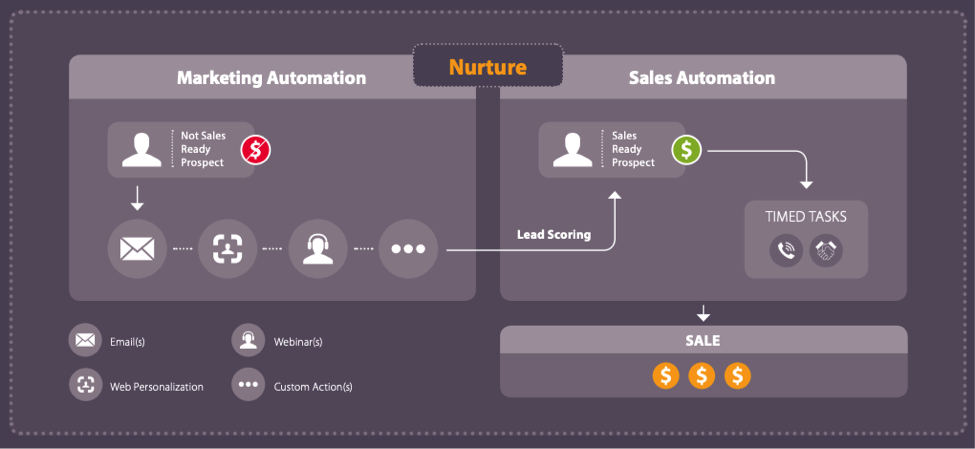
The ideal automation tool helps you identify potential leads by tracking online activities.
It also assigns specific scores to them to make the job easier. These behavior-based scores help segment the users.
This helps saves time and increases the chances of closing the loop.
Strategy #4: Re-engaging Old Leads Via eCommerce Automation
eCommerce marketing automation nurtures new leads and pushes them through the funnel.
But it also helps you to re-engage with old leads that were once active on your platform. The leads liked your products/services once.
But, for some reason or another, have lost touch. Re-engaging old leads with new content and lucrative offers can further your sales.

Most businesses tend to forget that old leads were once associated with their brand.
This is because they managed to provide them with solutions to their problems at an earlier time.
Go through the records and conversation histories.
This will help you identify who spoke what to whom, when, and why. Rekindle the conversation with updated content and re-engage the leads.
They will need less nurturing than new leads which can allow you to close the loop earlier.
Strategy #5: Personalize Your Website Through eCommerce Automation
The landing page of your company’s website makes a huge impression on customers. That is why a personalized website is essential to increase user interaction.
It makes a better impression and leads to sales. This allows you to use their data to personalize the landing page and the content.
With enough content, you can personalize the experience of even anonymous visitors.

For instance, let’s say you are an online retailer. A potential lead visits your website looking for shoes.
It would be better to give prominence to shoes on the landing page itself.
Personalized web pages allow you to cater to different leads. Also, it helps you build better relationships with them.
This allows your company to makes the best impression that it can on your customers.
Strategy #6: Track VIP Customers Via eCommerce Automation
In order to grow your business, you need to please your customers. The best way to do so is by having a loyalty program.
Instill a sense of loyalty in the customers for your brand. Soon, they will start selling your products for you.
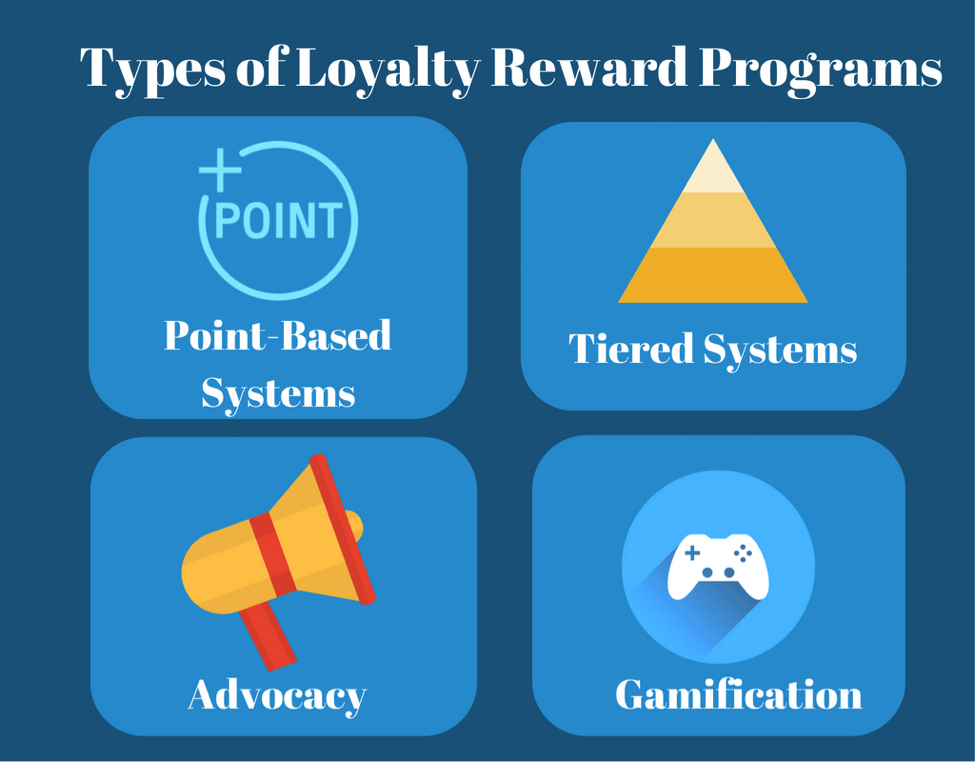
People like to feel a part of something bigger. This leads to the feedback loop of increased engagement.
You can automate eCommerce marketing this way and create a positive feedback loop.
Invite your customers to a loyalty program to let them know that they’re a part of your family.
Loyal customers will stick it out with the company through thick and thin. They form the base group of customers that a business can bank upon.
eCommerce automation helps you target the most engaged customers. It works through a system that integrates with your website builder.
OmniKick is one such tool. It lets you identify and engage your most valuable customers. Have a lead-scoring workflow and send an invitation to join your loyalty program.
Set up user actions with your loyalty program. Award them when they engage with your website as such. Award users with discounts and free shipping.
Also, you can provide early access to exclusive products and services.
This will ensure that your customers keep coming back for more. It will also allow you, customers, to build better relationship with your business
Strategy #7: Utilizing Social Media and Chat Bots With eCommerce Automation

Social media is the greatest avenue by which eCommerce expands. This leads to higher awareness and improves customer relationships.
Also, understanding the needs of the customers helps to provide quick solutions.
The world of social media is so vast that there are ways to reach your target audience.
At the same time, you should manage content to avoid floundering.
Automation then becomes a crucial aspect of the game. This is because it is impossible to track every time someone mentions your brand.
It is only fair that customers would want to know more about your products and services.
They will ask questions and post queries about the same.
At such times, conversational bots come in handy. This ensures that you engage with customers and increase your brand presence.

ChatBots can reduce customer service costs. Such eCommerce marketing strategies aim to organize your entire marketing in one place.
By engaging with the customers, you maximize the potential value of the visitors.
Strategy #8: Use eCommerce Automation in The Checkout Proces and Increase Sales
The most important eCommerce marketing strategy is also the most neglected one. It is the optimization of the checkout process.
The previous steps are of no avail if customers abandon their carts.
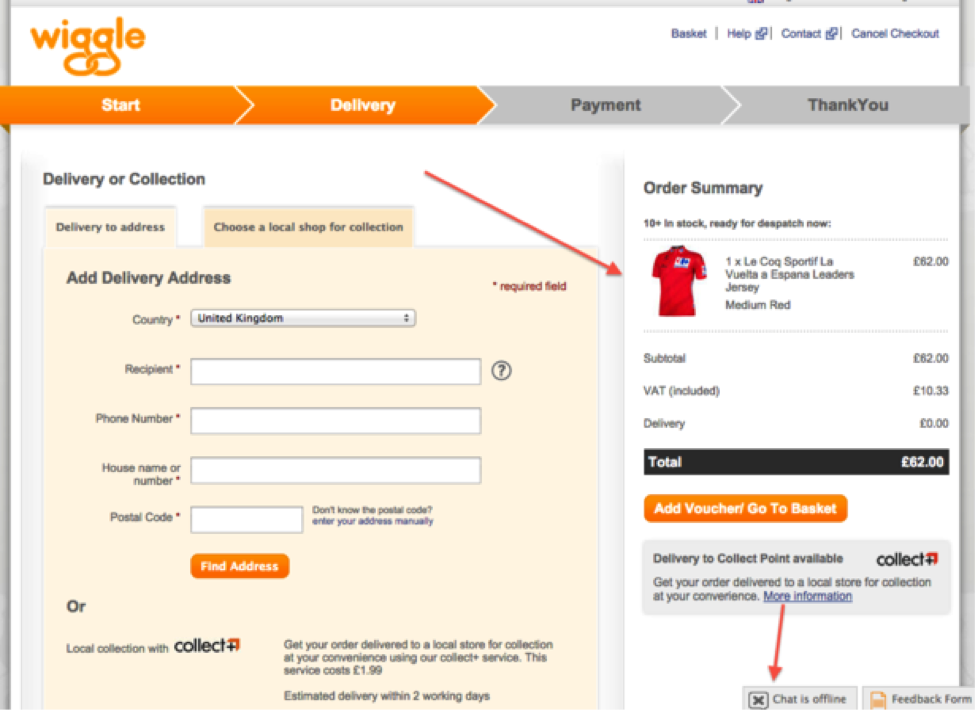
Make the process smooth and trustworthy throughout. It is the easiest way to decrease cart abandonment.
Ensure that you have everything laid out on one page.
If there are many steps, have a progress bar at the bottom. The customers must be able to visualize the whole process.
Furthermore, ensure that the buttons are easy to find. Make them accessible and make the process simple. It will lead to less frustration and cart abandonment.
This last stage of the process should include all extra costs incurred. Customers don’t like it when shipping cost comes at the end of the payment process.
If possible, show the shipping cost at the beginning of the checkout page.
Also, provide them with an estimated date of delivery. Ensure that you have many payment options for the customers to choose from.
Strategy #9: Conduct Tests and Analyze Results Via eCommerce Automation
Automated eCommerce marketing can help you test the different variables. These include user experience, email marketing, and user preferences.
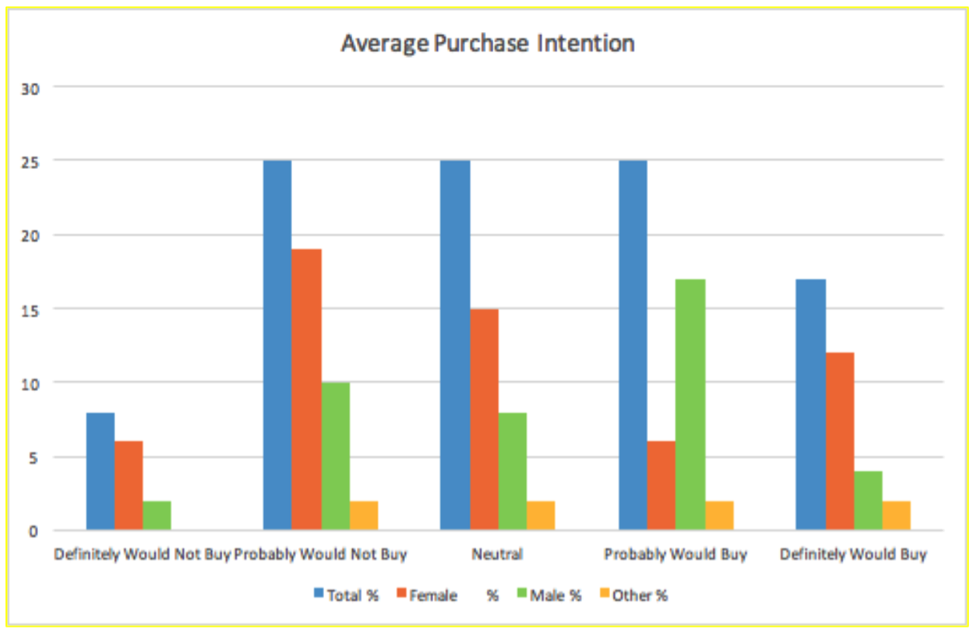
Such tests can help your business collect vast amounts of data from customers.
Automated eCommerce tools such as HumCommerce are a good example of that. These analyze trends and metrics that perform better than others.
The A/B testing done between different variants of a web page are ideal. Through analysis, you can help improve different aspects of marketing automation.
Also, heat maps and tracking forms can get data and give you an insight into how your web pages are being received. E-marketers can conduct such tests
Strategy #10: Provide Relevant Info to Sales Team Via eCommerce Automation
It is important to provide your sales team with relevant information. This enables them to have the best conversations that they can with the customers.

Track interaction between the company and the lead and give it to your sales team.
A CRM system allows your sales team to have a converse with sales-ready lead. Through it the conversation becomes personalized and engaging.
Additionally, track your leads on every channel. Be it on social media, search engines, or events. This can provide relevant information to the sales team.
Also, it helps to highlight the type of content your lead is interacting with.
This can further increase sales. Relevant content is the best way to ensure that your leads engage with your company.
Strategy #11: Integrate Your Business Via eCommerce Automation
The expansion of eCommerce has seen many complications arise. That is why more and more businesses are turning to market automation techniques.
eCommerce automation help businesses to cooperate and sync with other programs. This promotes a friendly software network and marks the task easy.
The integration of eCommerce marketing tools makes information exchange seamless. This creates organizational support and makes the work much more effective.
In essence, there are two kinds of integrations which are as follows:
Direct Integration – API integrations work to transfer data between two software applications.
You can turn on or off these direct connections with an administrative login.
Accessing without an administrative login will need help from the development team.
Third-party Integration – In this type, the data flows from a cloud application to a central hub.
Then, the data transfers from the central hub to another cloud application.
The disadvantage here is that it doesn’t sync in real-time and information can get delayed.
eCommerce automation allows marketers to co-exist with other programs through integration.
Wrapping Up:
With the right implementation, eCommerce automation can lead to more leads. It also helps to maintain customer satisfaction, and help grow your business far and wide.
Of course, it requires some experimentation and creativity. Such practices can help you to find the strategies that work best for your company.
If you have the right analytical tools, identifying the target audience is easy.
You can even pursue new leads and rekindle old leads to further your product. All these strategies can help you build your brand.
All this creates a following of loyal customers that buy your products and services.
Execute these strategies the right way and there’s no telling how high your business can grow.
An active platform has various benefits for the marketing team. These not only make their work easier, but it also allows you to win more deals in the future that can be banked upon.
